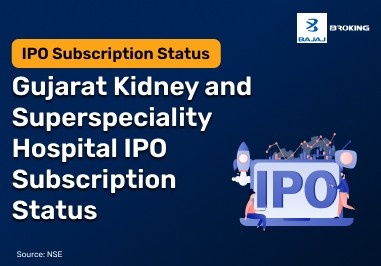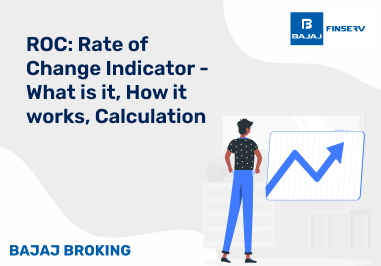When you make any financial decision, you expose yourself to various types of risk. Whether you're investing in stocks, fixed income instruments, or even holding cash, some degree of uncertainty is always present. Understanding different types of risk is not just important for investors but also for anyone managing money. These risks can be broadly classified into systematic and unsystematic categories, each affecting your financial choices differently. As someone managing personal finances or exploring investments, you need to assess how each type of risk impacts returns, liquidity, and financial goals. From market-wide changes to company-specific issues, knowing the sources of risk can help you take appropriate steps to mitigate them. Risk is not always about loss—it’s also about variability in outcomes. When you build this awareness, you're better positioned to handle volatility, maintain discipline, and make informed decisions suited to your personal financial objectives and risk tolerance levels.
What Is Risk?
Risk, in a financial context, refers to the possibility that the actual outcome of your investment or financial decision will differ from the expected result. This difference may arise due to market fluctuations, economic factors, interest rate changes, or even specific events like a company default. When you invest money, you are not guaranteed a return, and this element of uncertainty is what defines risk. It's important to recognise that risk is inherent in all forms of investment—from high-return equities to low-yield bonds. You might associate risk only with loss, but it also includes the chance of a gain not being realised as expected. For instance, a sudden drop in the stock market could reduce the value of your portfolio, even if the fundamentals remain strong. Understanding risk allows you to take calculated steps to manage it, such as diversification or choosing assets aligned with your time horizon and risk appetite.
Systematic Risk & Unsystematic Risk Overview
If you’re trying to understand the broad classification of financial risks, you’ll often come across the terms “systematic” and “unsystematic.” These two categories help you analyse where the risk in your investment truly comes from. Systematic risk refers to external factors that impact the entire market. These include macroeconomic issues like inflation, interest rate changes, political instability, or natural disasters. You cannot eliminate systematic risk through diversification. Unsystematic risk, on the other hand, is company- or sector-specific. For example, poor management decisions or labour strikes may impact one particular company or industry. Unlike systematic risk, unsystematic risk can be reduced by holding a diversified portfolio. If you are investing in equity markets, you face both types of risks. Knowing which one you're dealing with helps you decide how to hedge or spread your investments. The capital asset pricing model also distinguishes between these two risks while determining expected returns.
Difference Between Systematic and Unsystematic Risks
Aspect
| Systematic Risk
| Unsystematic Risk
|
Nature
| External and market-wide
| Internal and asset-specific
|
Example
| Inflation, recession, policy changes
| Company strike, management change
|
Control/Management
| Cannot be diversified away
| Can be reduced through diversification
|
Measurement
| Often measured by beta in the capital asset pricing model
| Evaluated using company or sector analysis
|
Impact Scope
| Affects the entire market or multiple sectors
| Affects only a particular company or sector
|
Risk Type
| Non-diversifiable risk
| Diversifiable risk
|
Understanding the differences helps you develop better investment strategies and manage your portfolio more effectively.
Time vs. Risk
Time plays a significant role in how different types of risk affect your investments. The longer your investment horizon, the better your ability to absorb short-term volatility and make informed decisions. Here’s how you can relate time with risk exposure.
Longer horizon allows recovery
Over time, markets tend to recover from short-term fluctuations. If you stay invested for longer durations, you can ride out volatility and reduce overall risk.
Short-term investments face liquidity risk
If you need immediate access to funds, you're more exposed to liquidity issues. Investments with lock-in periods or low marketability may not suit short-term goals.
Compounding reduces perceived volatility
Long-term investments benefit from compounding returns, which helps offset the impact of short-term losses and makes risks more manageable.
Time reduces unsystematic risk through averaging
Staying invested over time allows gains from well-performing assets to balance underperformers, particularly if you diversify.
Market timing risk increases with short duration
The shorter the timeframe, the more your returns are affected by entry and exit points. This increases the chances of getting impacted by temporary market events.
Spreads and Risk-free Investments
Spreads indicate the level of risk you take beyond a risk-free investment. You can measure how much additional return you should expect by comparing your asset with a benchmark like government bonds.
Concept
| Explanation
|
Risk-free investment
| Typically government securities like T-bills or bonds with low default risk
|
Yield spread
| The difference in return between a risky asset and a risk-free investment
|
Purpose of spread
| Reflects the additional risk premium you require to invest in a riskier instrument
|
Example of spread
| A corporate bond yielding 8% vs a government bond at 6% gives a 2% risk premium
|
Role in decision-making
| Helps you evaluate if the added return justifies the additional risk
|
Understanding spreads is crucial when assessing investments based on return potential and associated risk.
Conclusion
Understanding the types of risk involved in any financial activity helps you approach investments with better clarity and confidence. Whether you are planning for long-term growth or short-term liquidity, risk influences every financial decision you make. By recognising how time, diversification, and asset choice impact different risks, you gain more control over your outcomes. Knowing where your exposure lies and how to balance risk with expected returns is an important skill for your financial journey. From systematic uncertainties to individual asset issues, managing risk isn’t about avoiding it—it’s about making informed, consistent choices based on your financial goals and personal comfort with volatility.














